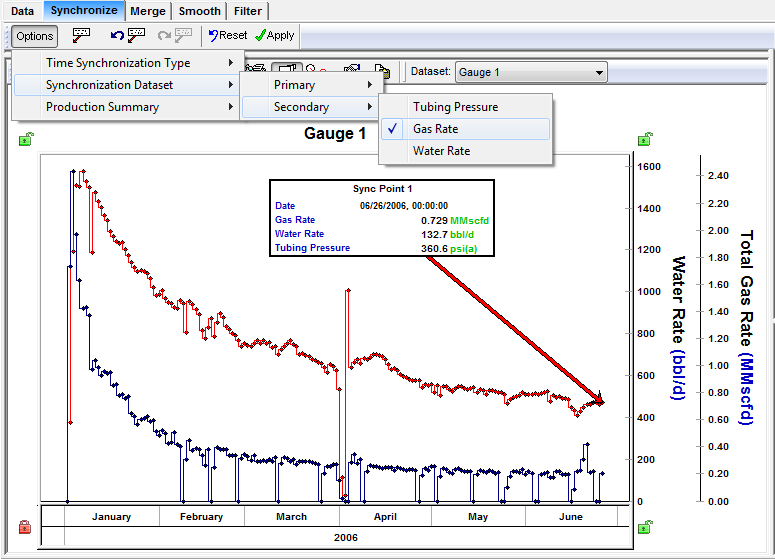Synchronizing Data
Data usually comes from multiple sources, and it is often necessary to synchronize clocks from different gauges, or different datasets within the same gauge. Synchronizing shifts the time track of the secondary dataset, in order to line up the selected primary and secondary sync points.
To synchronize data:
1. Click the Data Management tab; then click the Synchronize sub-tab.
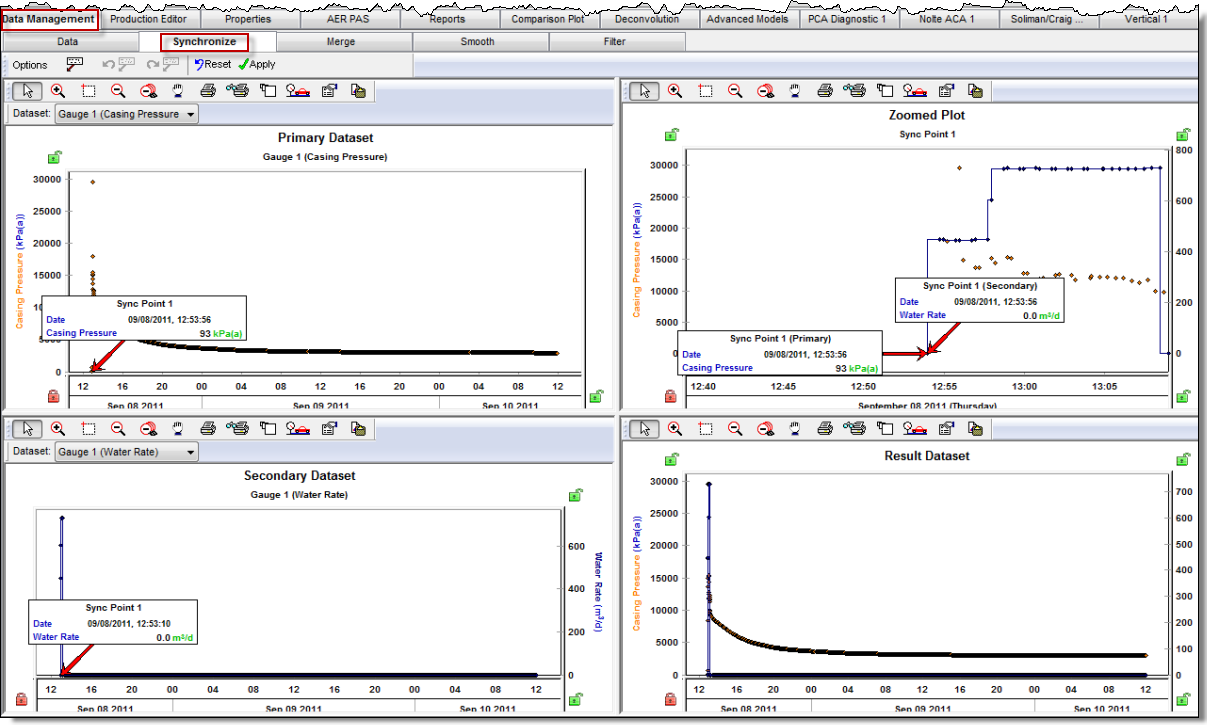
2. Select the primary and secondary datasets from the drop-down menus.
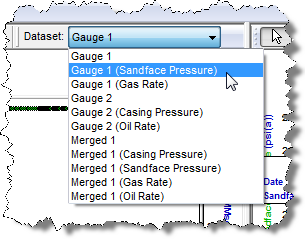
3. Move the primary and secondary sync point annotation arrows to the two points on the respective datasets that you want to line up. A preview of the resultant synchronized dataset is located in the bottom right plot.
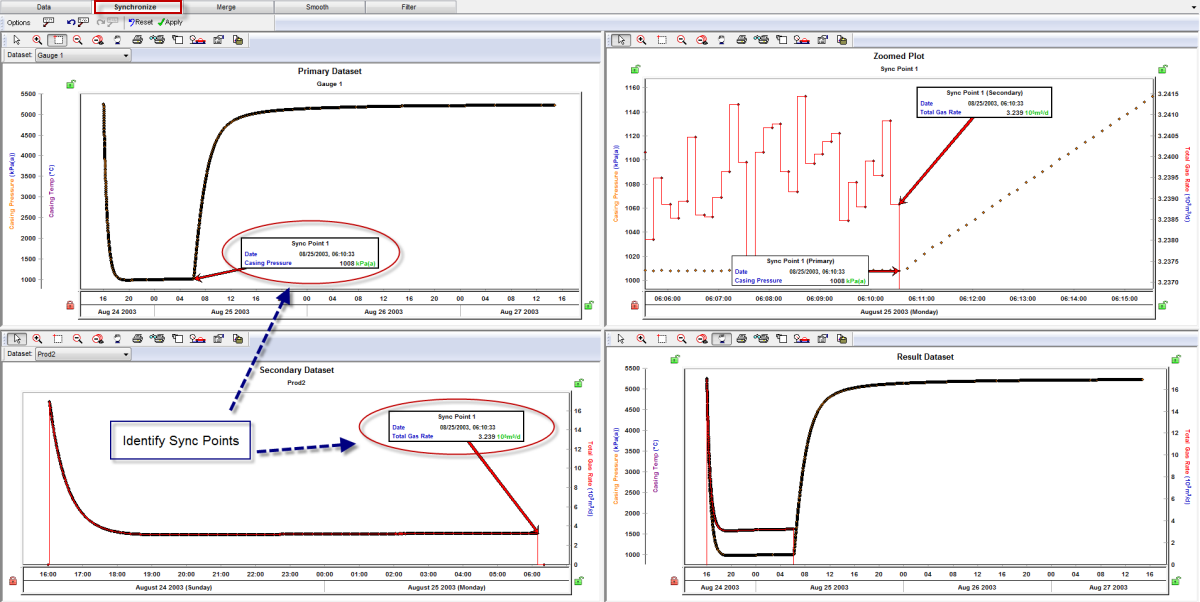
4. Click Apply.

The time stamp of the secondary dataset is updated to reflect the synchronization.
If you want to add multiple sync points, click the Options button in the top toolbar. The data between two sync points can be compressed / expanded, or the first / last point from the secondary data point can be shifted.
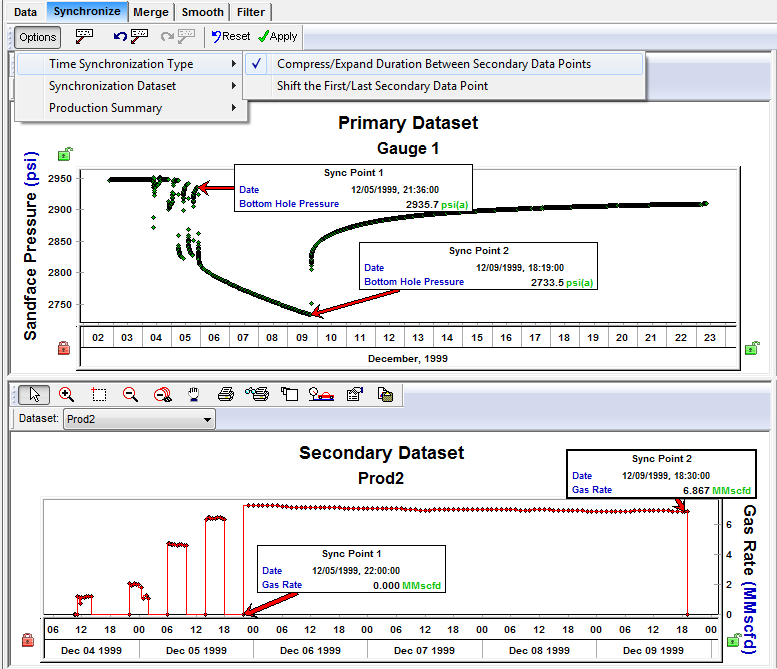
Multiple datasets (such as gas, oil, and water rates) can be contained within a gauge. By clicking the Options button in the top toolbar, you can switch which dataset is being used to synchronize. If for example, the gas rates have continuous data and the water rate is sluggish, it will be easier to select the gas rate to use for synchronization.
